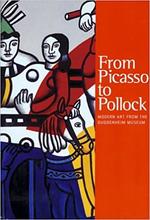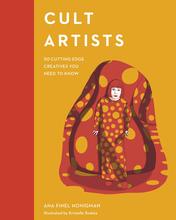More about Kazimir Malevich
- All
- Info
- Shop
Works by Kazimir Malevich

Contributor
Kazimir means something like “showing the world," so of course he became a painter.
Father Malevich was manager of a sugar factory. Kazimir spent his childhood on sugar-beet plantations together with his 14 siblings (of which only 9 survived). His farming childhood would later on inspire him to paint his “peasant series”. The Malevich family lived far from any cultural centers, and far from anything else for that matter. Kazimir knew nothing about painting or art in general, but he was super impressed by the beauty of the surrounding landscapes. He called these memories “negatives that needed to be developed”, very poetic.
One day young Kazimir saw a man painting a roof, which “was turning green like trees and the sky." What? Anyway, after the guy finished and left, little rascal Kazimir sneaked onto the roof and started painting. This wasn’t necessarily a big success, but he fell in love with it. His parents bought him his first brush at the local pharmacy. It was a brush which other people used to anoint the throat of diphtheria patients…which is disgusting. Kazimir absolutely loved his brush though, much better than a pencil. He loved that the brush allowed him to cover larger surfaces, something which would eventually become his trademark. Some time after they bought him his brush, his parents also bought him a set of paints. This was a turning point though in Kazimirs' life, but at the time no one realized. No one cared, either. I mean he was supposed to follow in his dad’s footsteps and choose a profession worthy of a “real man." Painters aren’t real men!
Like any teen, afraid to disappoint their parents, Kazimir went to agricultural school. He hated it, but it was the only diploma he would ever earn. At the age of 18 Kazimir and his family moved to Kursk in southern Russia. That’s where Kazimir married a girl called Kazimira and fathered two children. I was so hoping one of them was called Kazimini, but nope, Anatoly and Galina. Even though Kazimir and Kazimira sounded awesome together, their marriage didn’t last. Kazimir couldn’t afford to fully dedicate himself to painting, so he worked as a drawer at the Kursk-Moscow railway. He eventually moved to Moscow and tried to enter the Moscow School of Arts and failed. He tried again and again, but kept failing. He was forced to move back to Kursk and this was also when he and Kazimira decided to file for divorce.
Later on Kazimir took part in the “Jack of Diamonds” exhibition, which brought together some cool and radical avant garde painters. From then on Kazimir exhibited at basically any “scandalous” exhibition. Because yeah, his work was considered pretty scandalous, probably because it wasn’t realistic but “cubo-futuristic”. While living in st Petersburg Kazimir tried to be even more provocative and entered the “Union of Youth”, a group of avant garde painters and futurist-poetry weirdos. The group created the first ever futurist theater, it was meant to be super provocative, and yeah it was! All those basic bitches were outraged, they started shouting and the whole thing turned out to be a huge scandal!
When Stalin got in charge, he changed the focus of art allowed in Russia. From now on, only paintings with educational value could be shown. Every single painting that wasn’t considered “educational," was packed into trains and shipped off to Siberia. Kazimir's work was described by Stalin as “bourgeois” and confiscated as well. In relation to this, he was arrested twice, but released each time. In 1930 he was arrested by the United State Political Agency. He was held for questioning on a charge of espionage because he visited Poland and Germany in 1927. Kazimir was released after six months and given 3 choices: 1. He could leave the country; 2. He could close himself in a room and work just by himself; or 3. He could become a realist painter. He chose the third option and tried to be a realist painter for a while. But, while in prison, Kazimir developed cancer and died 5 years later. On his deathbed, a black square painting was exhibited above him. Take that, Stalin!
In 2002 a black square painting sold for $1 million by Vladimir Potanin and donated to the State Hermitage Museum collection. This donation was the largest donation in Russia since Lenin forced nationalization in 1918. A few years later in 2008, the painting Suprematist Composition sold for a whopping $60 million, a world record for any Russian work of art ever sold.
Featured Content
Here is what Wikipedia says about Kazimir Malevich
Kazimir Severinovich Malevich (23 February [O.S. 11 February] 1879 – 15 May 1935) was a Russian avant-garde artist and art theorist, whose pioneering work and writing influenced the development of abstract art in the 20th century. He was born in Kiev, modern-day Ukraine, to an ethnic Polish family. His concept of Suprematism sought to develop a form of expression that moved as far as possible from the world of natural forms (objectivity) and subject matter in order to access "the supremacy of pure feeling" and spirituality. Active primarily in Russia, Malevich was a founder of the artists collective UNOVIS and his work has been variously associated with the Russian avant-garde and the Ukrainian avant-garde, and he was a central figure in the history of modern art in Central and Eastern Europe more broadly.
Early on, Malevich worked in a variety of styles, quickly assimilating the movements of Impressionism, Symbolism and Fauvism and, after visiting Paris in 1912, Cubism. Gradually simplifying his style, he developed an approach with key works consisting of pure geometric forms and their relationships to one another, set against minimal grounds. His Black Square (1915), a black square on white, represented the most radically abstract painting known to have been created so far and drew "an uncrossable line (…) between old art and new art"; Suprematist Composition: White on White (1918), a barely differentiated off-white square superimposed on an off-white ground, would take his ideal of pure abstraction to its logical conclusion. In addition to his paintings, Malevich laid down his theories in writing, such as "From Cubism and Futurism to Suprematism" (1915) and The Non-Objective World: The Manifesto of Suprematism (1926).
Malevich's trajectory in many ways mirrored the tumult of the decades surrounding the October Revolution in 1917. In its immediate aftermath, vanguard movements such as Suprematism and Vladimir Tatlin's Constructivism were encouraged by Trotskyite factions in the government. Malevich held several prominent teaching positions and received a solo show at the Sixteenth State Exhibition in Moscow in 1919. His recognition spread to the West with solo exhibitions in Warsaw and Berlin in 1927. From 1928 to 1930, he taught at the Kiev Art Institute, with Alexander Bogomazov, Victor Palmov, Vladimir Tatlin and published his articles in a Kharkiv magazine Nova Generatsiia (New generation). But the start of repression in Ukraine against the intelligentsia forced Malevich return to Leningrad (Saint Petersburg). From the beginning of the 1930s, modern art was falling out of favor with the new government of Joseph Stalin. Malevich soon lost his teaching position, artworks and manuscripts were confiscated, and he was banned from making art. In 1930, he was imprisoned for two months due to suspicions raised by his trip to Poland and Germany. Forced to abandon abstraction, he painted in a representational style in the years before his death from cancer in 1935, at the age of 56.
His art and his writings influenced contemporaries such as El Lissitzky, Lyubov Popova and Alexander Rodchenko, as well as generations of later abstract artists, such as Ad Reinhardt and the Minimalists. He was celebrated posthumously in major exhibits at the Museum of Modern Art (1936), the Guggenheim Museum (1973) and the Stedelijk Museum in Amsterdam (1989), which has a large collection of his work. In the 1990s, the ownership claims of museums to many Malevich works began to be disputed by his heirs.
Check out the full Wikipedia article about Kazimir Malevich





















